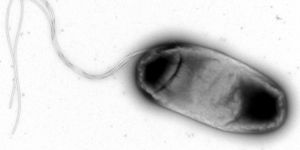Despite its somewhat exotic sounding name, the jaguarundi is one of the most wide-ranging cats in the Americas - living in the scrublands of the borders between the U.S, and Mexico through every major ecoregion of Brazil and into south central Argentina. Resembling large house cats with flat face, rounded ears, and a plain dark pelt, they are often called “weasel cat” or “otter cat” due to their agility. Jaguarundis are generally considered the most common cat in the western hemisphere.
However, a new study in the scientific journal Mammal Review recently publicized that in fact biologists lack a lot of information on the species. The International Union of Conservation for Nature (IUCN) currently classifies the jaguarundi globally as Least Concern, but because of little research on the cats, scientists can’t say for certain if the population is stable or declining.
In terms of human influence, jaguarundis are lucky in that they lack the spots and stripes on their fur that have cause for decline of so many other felines. They have mostly escaped global hunting for their pelts, and thus this factor is not greatly affecting their populations.
However, like many species, jaguarundis face habitat degradation as a threat. Most of its preferred habitat — tropical lowlands — is endangered throughout the continent. “Based on what I now know and suspect of the jaguarundi across their range, I’d advocate for increased conservation of several very endangered neotropical habitats,” said Anthony Giordano, the author of the study and founder of SPECIES (Society for the Preservation of Endangered Carnivores & their International Ecological Study). For his report Giordano conducted a thorough review of existing literature, including unpublished and peer-reviewed reports, documented and anecdotal sitings, and general mammal field surveys.
Yet more than anything regarding jaguarundi conservation, up-to-date, accurate field surveys are necessary. The report explains that jaguarundis are an often erroneously reported as a ‘mystery’ cat across parts of the U.S., including Texas, Arizona, and Florida.
“It is highly unlikely that the animals being observed [outside their known range] are actually jaguarundis,” said Giordano. In an earlier study Giordano reviewed all documented observations of jaguarundis in Big Bend National Park. These sightings, which describe its unmistakable character as an otter-like cat, strongly suggest that a population may still exist but biologists need to conduct a field survey to confirm. Because of incorrect and missing information, the species continues to be an unsolved mystery.
Sources:
Mongabay News, Giordano, A. J. (2016). Ecology and status of the jaguarundi Puma yagouaroundi: a synthesis of existing knowledge.Mammal Review, 46(1), 30-43.










